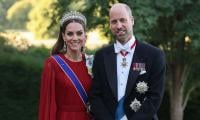‘Jamal Shah continues to deliver his cerebral vision and psychedelic fantasy stemming from daunting psychosocial milieu’
Almost akin to a Swiss knife, Jamal Shah manifests sure-fire ability to express emotion equitably in acting, film direction, script and song writing, music, singing and painting, according to art critic M Saeed Kureshi, Sitara-e-Imtiaz.
Shah’s passion for painting, honed over four decades, continues to deliver the artist’s cerebral vision and psychedelic fantasy which stems from the daunting psychosocial milieu.
Sensitivity to human suffering and growing challenges of economy and disease have inevitably transformed Shah’s perception. He believes that humanity’s salvation lies in making a positive contribution towards the well-being of the less fortunate who are devoid of daily bread and health care.
The language of culture and art, he reckons, is an effective and equitable platform that gives voice and intellectual emancipation to the people. With an inborn feeling of patriotism, he has always endeavoured to inculcate a sense of civic and moral responsibility amongst the masses through his work. His profoundly insightful paintings promote pragmatic development through unification and sharing.
The colourful stimulus imbued in Shah’s current set of works, titled ‘Celebration of a dehumanized existence’, bears universal interpretation which transcends peace, positivity and harmony.
The paintings rejuvenate numerous social issues through palpable symbolism and candid visual narratives. Shah’s expression harbours no riddles nor mystery, and is spiritedly decipherable by almost any segment of society. The works portray the inherent urge of human beings to interact, notwithstanding differences and misgivings, creating crossroads between cultures.
Decrying the plague of suppression and brutalisation, the artist condemns psychological mistreatment of the masses. Metaphorically, one such abuse is a stressful physical punishment primarily in educational institutions on students by teachers, called ‘Murgha’.
The punished person assumes a position resembling that of a rooster, by squatting and then looping the arms behind the knees and firmly holding the ears. Shah has used the Murgha symbolically in most paintings as a seasoning to create an ambience of lampooning, remorse and mounting struggle.
Furthermore, contriving advantage from ignorance and innocence of the public has been common practice with the more affluent, imposing caging of the mind, disruption of hope and destruction of dreams.
Individuals holding power continue to promote discouragement of human struggle for liberation through deviations created by ridicule and punishment based on minor misdemeanours.
Concomitantly, however, the works also depict strong inspirational propositions that encourage people to develop intimacy with life to creatively initiate aesthetic decision-making and deploy art as a vehicle for meaningful evolution and change.
Browsing through history one can find semblance of Shah’s work with that of Francisco Goya, who was a perceptive viewer of the world around him, and his art responded directly to the milieu charged with turbulent events.
Goya has long been considered an artist of the Enlightenment who took a heroic stance against the forces of political oppression, and critics have read his art as a reflection of his revolutionary ideas.
His undaunted scenes from the Peninsular War foretold the works of Pablo Picasso in the 20th century, while his exploration of weird and surreal subjects in the Caprichos prints inspired emerging Surrealists like Salvador Dali.
Akin to the purposeful painting of Goya, Shah has always spoken his mind through artwork. Hence, with a fascination for creating larger-than-life art icons, Shah put together an assemblage of a 25-feet-high cage structure with wings surrounded by 101 life-sized human figures fabricated within various materials.
Called ‘Situation 101’, the installation is a bold reflection of the entire nation being misled by the rich and the influential. The sculpture was successfully exhibited at the Karachi Biennale 2017, along with large LED screens for video projection of performances, poetry recital by renowned media personalities and actors, dance by Amna Mawaz and the National Performing Arts Group of Islamabad’s Pakistan National Council of the Arts (PNCA), music by Sain Khawar and Ustad Hamid Shahid and Faqirs from Sindh, as well as live painting and graffiti during the dance performances. Later, the cage structure was permanently displayed on the premises of PNCA.
Destined to devote himself to philanthropic services as head of ArtAid, a humanitarian organisation, Shah has conducted numerous charitable activities during national calamities and natural disasters.
ArtAid was launched in 2005 as a platform to support the earthquake-affected people, and held the historic Marathon Live Art Auction in collaboration with PTV.
With the onslaught of Covid-19, ArtAid was reactivated to provide much needed assistance to the artists and performers who became unemployed, the affected low-income families, daily wagers and other underprivileged communities in difficult times.
ArtAid distributed essential grocery items such as flour, cooking oil, sugar, medicines, disinfectants, etc. ArtAid also showcased artworks for online auction, both for funds as well as for bartering for supplies. Furthermore, the organisation successfully collected funds and supplies through online music concerts.
Yet another remarkable initiative of Shah was the launching of the China-Pakistan Economic Corridor (CPEC) Cultural Caravan in November 2017 by PNCA. The concept behind the CPEC Cultural Caravan was to engage a diverse group of artists from all strands of art and culture to embark upon a journey along the Silk Route to document and reflect upon the cultural diversity of the region.
The cultural excursion was composed of diverse groups of Pakistani and Chinese artists, musicians, dancers, photographers, anthropologists, writers and film-makers. The Caravan’s journey culminated in a grand showcasing of the outcome of the historic activity in Islamabad, Lahore and Karachi.
The mega fest included a seminar titled ‘Art and culture enabling creative economy’, an exhibition of photographs, screening of the documentaries, a fusion of Pakistani and Chinese music, dance performances, and ethnic fashion show of both countries.
Hailing from a conservative tribal background, Shah is an alumnus of Lahore’s National College of Arts and London’s Slade School of Art, and holds a master’s degree in English Literature. After his studies abroad, Shah also became the first Pakistani artist whose work was exhibited at the highly renowned Victoria and Albert Museum, London.
One of his major contributions to art is the establishment of the Art Department at the Balochistan University which has transformed a large segment of dormant literati into creative artists and successful entrepreneurs.
As a compassionate philanthropist, Shah is determined to identify further avenues to generate and disseminate help, material and assistance to those in need during pandemics, floods, earthquakes and other natural disasters. Living up to his commitment, Shah continues to patronise and monitor the humanitarian movements that he initiated.
-
 Kelly Clarkson Discovers A Shark Named In Her Honour
Kelly Clarkson Discovers A Shark Named In Her Honour -
 HBO Mulls Major 'Game Of Thrones' Spin-off Focusing On A Stark
HBO Mulls Major 'Game Of Thrones' Spin-off Focusing On A Stark -
 Ashton Kutcher Says He's Proud Of Demi Moore
Ashton Kutcher Says He's Proud Of Demi Moore -
 Why Prince William, Kate Hired A Crisis Expert Despite Royal 'calm'?
Why Prince William, Kate Hired A Crisis Expert Despite Royal 'calm'? -
 Extent Of Meghan Markle’s Fears Gets The Spotlight: ‘The Press Detest Her Which Is A Problem’
Extent Of Meghan Markle’s Fears Gets The Spotlight: ‘The Press Detest Her Which Is A Problem’ -
 Caitlyn Jenner Finally Reacts To Kylie, Timothee Chalamet Relationship
Caitlyn Jenner Finally Reacts To Kylie, Timothee Chalamet Relationship -
 Prince William’s Beefed Up PR All Set To Fight Off ‘plot’ And ‘it Might Not Be Long’
Prince William’s Beefed Up PR All Set To Fight Off ‘plot’ And ‘it Might Not Be Long’ -
 Kate Middleton Ups A New Role Unofficially For King Charles As William Prepares His Coronation
Kate Middleton Ups A New Role Unofficially For King Charles As William Prepares His Coronation -
 Teyana Taylor Says She Misread Leonardo DiCaprio Globes Moment
Teyana Taylor Says She Misread Leonardo DiCaprio Globes Moment -
 A$AP Rocky Reveals What Encouraged Him To Date Rihanna
A$AP Rocky Reveals What Encouraged Him To Date Rihanna -
 Newborns At Risk: Health Experts Warn Your Baby Could Already Have Diabetes
Newborns At Risk: Health Experts Warn Your Baby Could Already Have Diabetes -
 Sarah Ferguson Updates Her Plans Now That Andrew’s Eviction Is Nine Days Away
Sarah Ferguson Updates Her Plans Now That Andrew’s Eviction Is Nine Days Away -
 Hailey Bieber Sends Cease And Desist To TikToker
Hailey Bieber Sends Cease And Desist To TikToker -
 Kate Middleton Celebrates England Women's Rugby Stars After World Cup Win
Kate Middleton Celebrates England Women's Rugby Stars After World Cup Win -
 Kris Jenner Dubs Chicago West Her 'sweet Angel' As She Turns Eight
Kris Jenner Dubs Chicago West Her 'sweet Angel' As She Turns Eight -
 Josh Charles Credits Taylor Swift For His, Ethan Hawke’s Moon Person Trophies
Josh Charles Credits Taylor Swift For His, Ethan Hawke’s Moon Person Trophies



